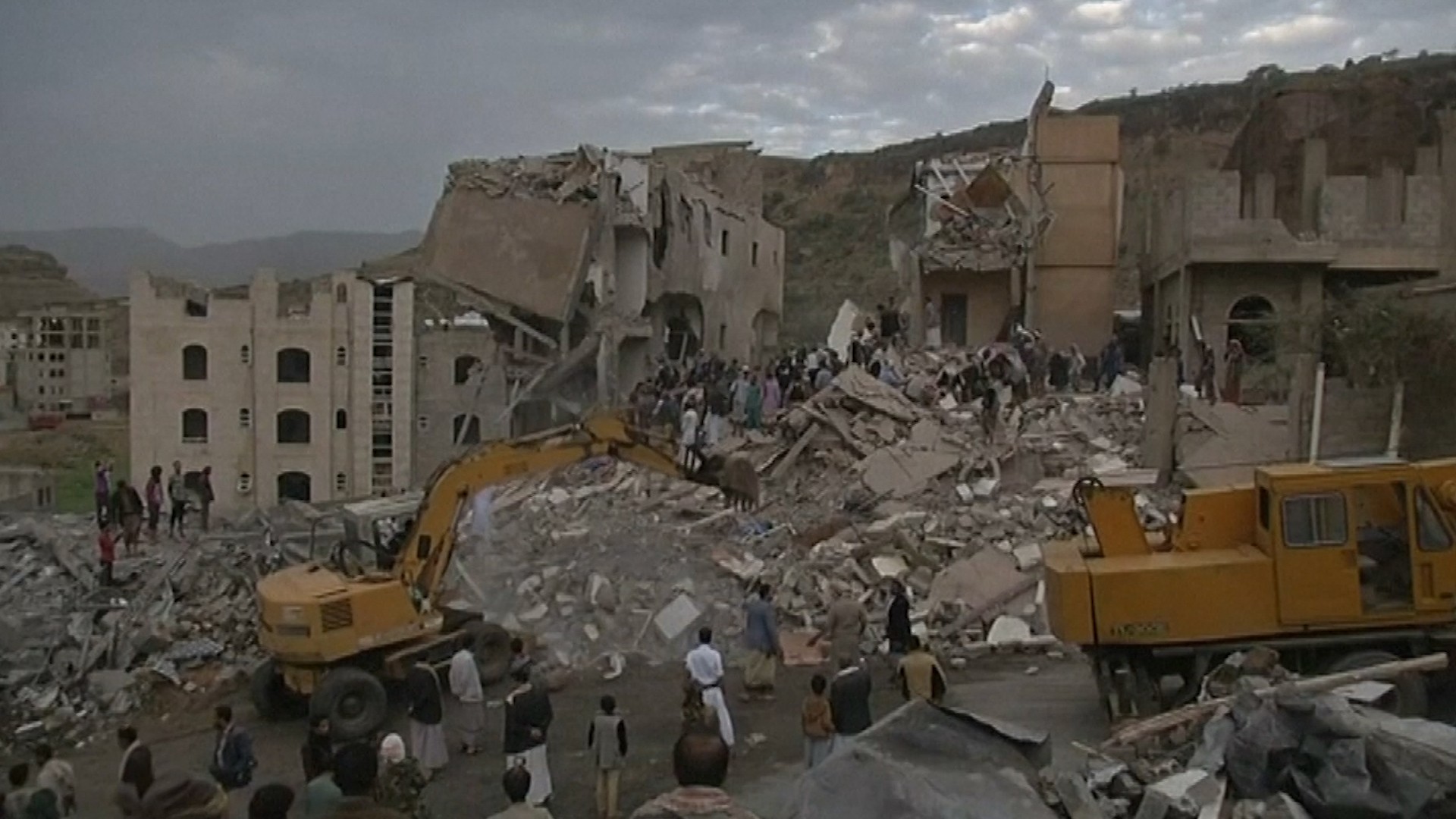President Trump has been conducting a campaign of “maximum pressure” on Iran since taking office, warning just a few months ago that any attack on U.S. targets would be met immediately with “overwhelming force.”Now, as the U.S. waits to hear what Saudi Arabia wants it to do about what they claim is Iran’s latest attack on an oil facility in the Kingdom, Trump is defending his indecision as a show of strength and not weakness.Sen. Lindsey Graham (R-S.C.) criticized Trump on Twitter on Tuesday night, claiming that the president’s inaction when Iran downed a U.S. drone in June was the reason that Tehran felt emboldened to conduct Saturday’s attack.“The measured response by President @realDonaldTrump regarding the shooting down of an American drone was clearly seen by the Iranian regime as a sign of weakness,” Graham goaded the president.On Tuesday, Vice President Mike Pence briefed Graham and others in the Senate Republican Conference on the latest intel about the devastating attack. After the meeting, the South Carolina senator said the hit on Saudi oil facilities was “literally an act of war and the goal should be to restore deterrence against Iranian aggression which has clearly been lost.”READ: Iran’s Supreme Leader: no chance of talks with the U.S.“If any action takes place against Iran, the action will be faced by Iran’s answer immediately,” the state news agency IRNA reported Wednesday, quoting the note. It added that Iran’s response wouldn’t be limited to the source of the threat, without elaborating.Iran’s Supreme Leader Ayatollah Ali Khamenei ruled out any chance of talks with the U.S. Tuesday, and it now appears Iran’s president and foreign minister may miss the U.N. General Assembly in New York next week as they have not yet been issued visas. There had been speculation about a possible meeting between Trump and Iranian President Hasan Rouhani next week, but the State Department has yet to comment on why the visas have not been issued.Trump has been preparing for possible military action against Iran since he said Sunday that the U.S. was “locked and loaded.”On Monday he ordered the Pentagon to plan potential military responses, sources told CNN, adding that the White House is awaiting Saudi rulers’ advice before making a decision on what to do next.READ: Trump is convinced Iran was behind the massive attack on Saudi oil facilitiesSecretary of State Mike Pompeo traveled to Riyadh Tuesday night, where he will meet the Crown Prince Mohammad Bin Salman to discuss possible responses to the attack.U.S. officials continue to investigate Saturday’s hit, poring over satellite imagery, analyzing radar tracks, and combing through intercepted communications in search of a smoking gun, the New York Times reports.Crucial to the investigation is physical evidence gathered by Saudi Arabia close to the site of the attack, including “pristine circuit boards” from a cruise missile that Washington says was launched from military bases in southwest Iran. The remnants of the weapons used could provide hard evidence of where the attack came from.READ: Iran said the U.S. shot down its own drone by mistakeThe New York Times reports that one theory gaining traction among intelligence officials is that the missiles and drones were launched from Iran but programmed to take an indirect path to their target.The theory suggests the weapons didn’t fly directly west toward the oil facilities, as Saudi and U.S. surveillance networks are much more comprehensive in these areas. Instead, they flew north initially and into Iraqi airspace, where U.S. surveillance cover is much lower. Cover: President Donald Trump arrives at Albuquerque International Sunport, Monday, Sept. 16, 2019, in Albuquerque, N.M. (AP Photo/Evan Vucci)
Cover: President Donald Trump arrives at Albuquerque International Sunport, Monday, Sept. 16, 2019, in Albuquerque, N.M. (AP Photo/Evan Vucci)
Advertisement
Iran-backed Houthi rebels in Yemen have claimed responsibility for the attack, and Tehran has denied any involvement.Trump said earlier this week that he is waiting for advice from Riyadh before making a judgment on what action — if any — should be taken against Iran. Responding to Graham’s comment, the president said his decision to cancel a retaliatory airstrike at the last minute in June “was a sign of strength that some people just don’t understand.”
Iran, which denies involvement in the attack, warned Washington in a note, sent through Swiss diplomats on Monday, that any military action taken against the country would be “immediately” countered.
Advertisement
Advertisement

